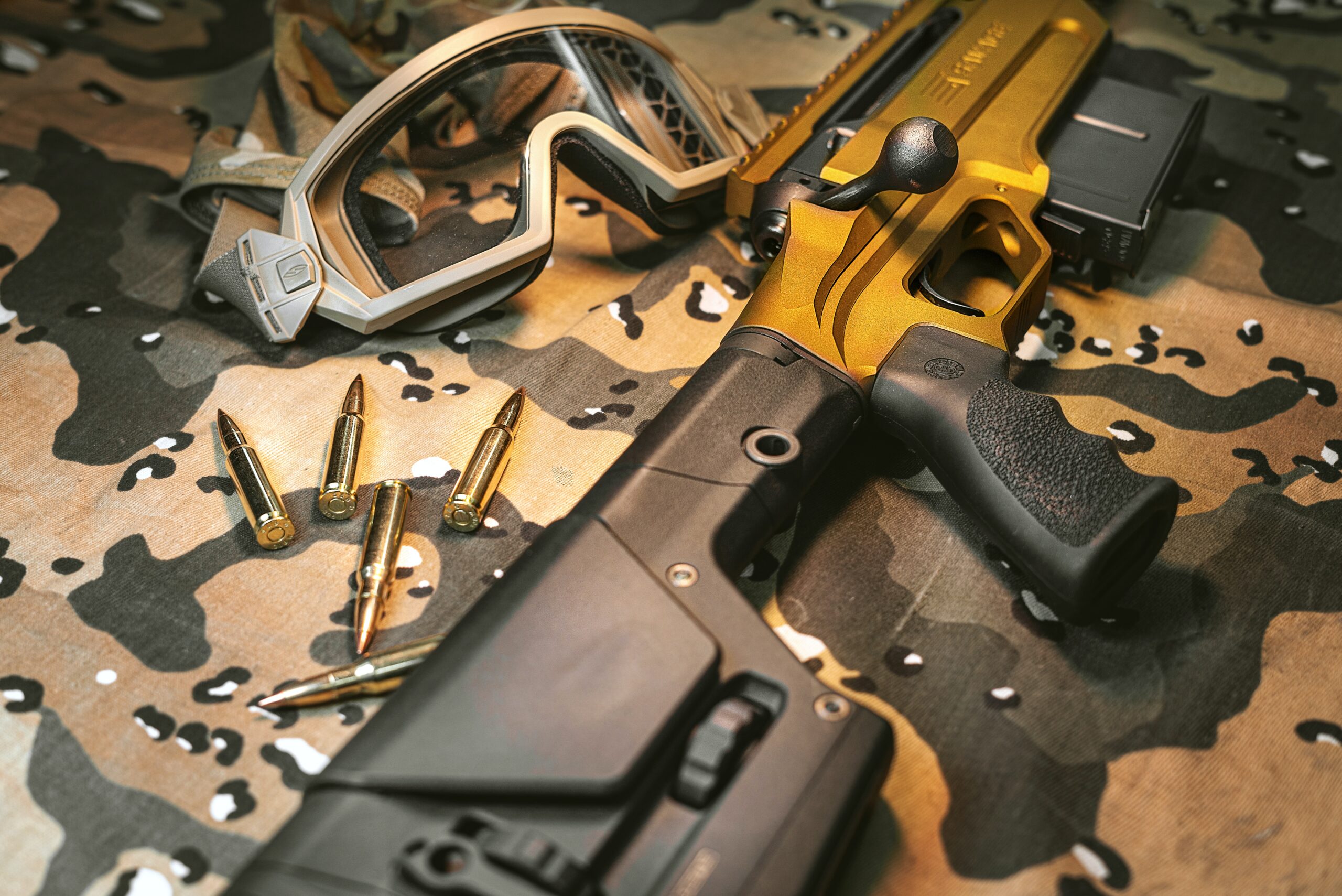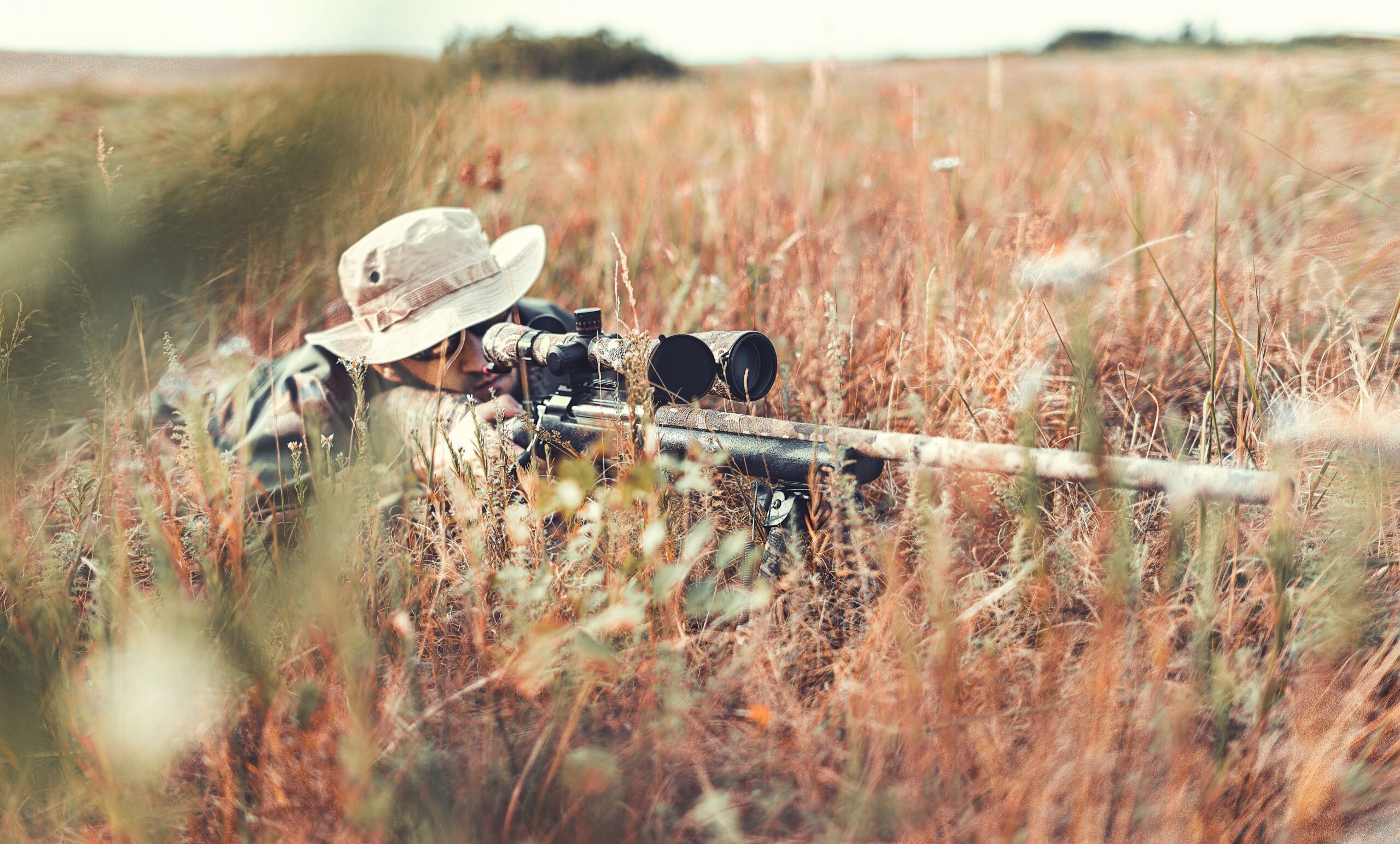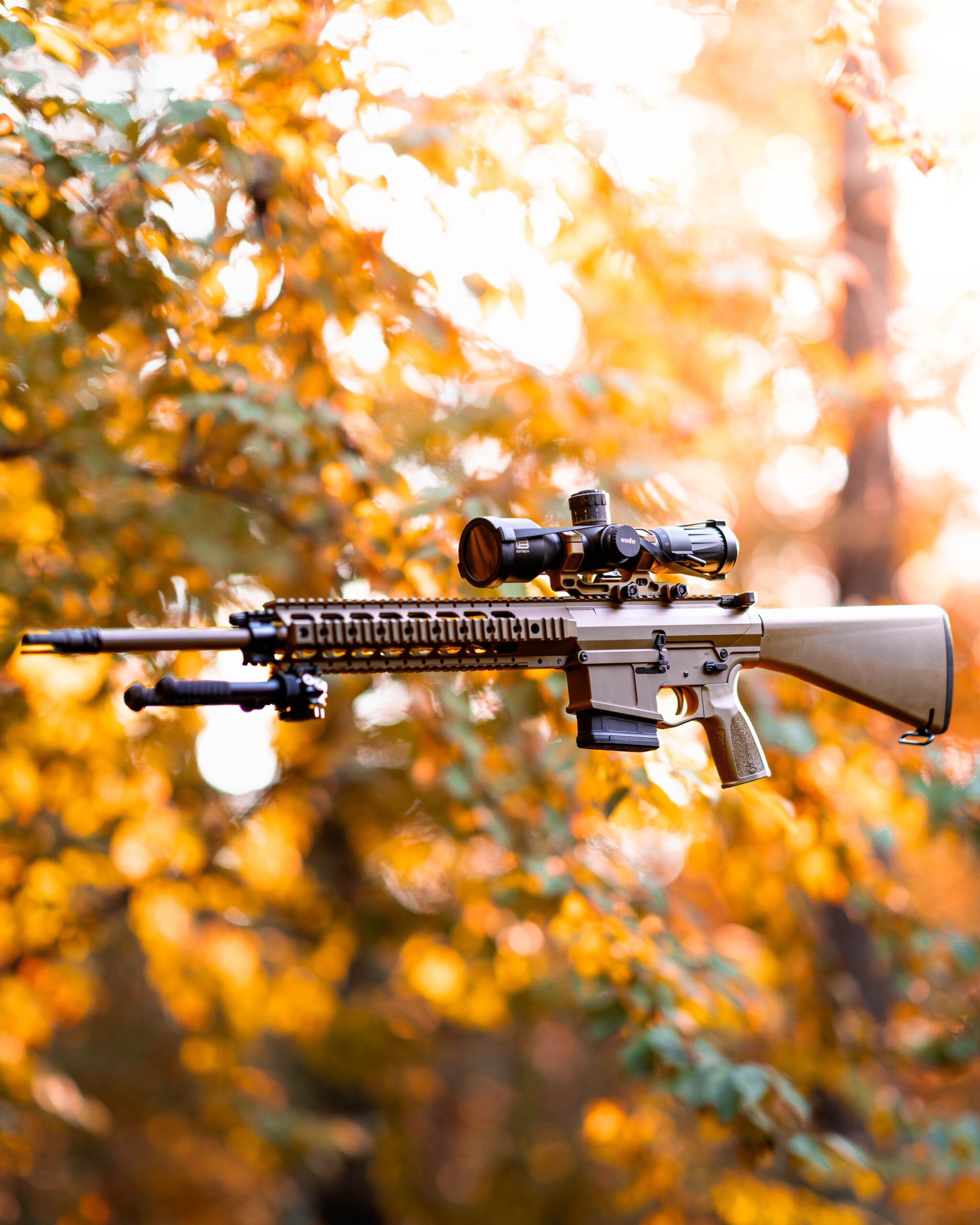Sure, you’ve probably wondered if it’s possible to use a rifle scope on a handgun. After all, rifle scopes are designed specifically for long-range accuracy, while handguns are typically used for close-quarters shooting. But, believe it or not, there’s more to it than meets the eye. In this article, we’ll explore whether or not it’s feasible to use a rifle scope on a handgun and the potential benefits or drawbacks of doing so. So, let’s dive right in and find out if you can bring the accuracy of a rifle to your trusty handgun!
Rifle Scopes vs Handgun Scopes
Rifle scopes and handgun scopes are both optical devices that allow shooters to enhance their accuracy and precision when aiming at targets. However, there are distinct differences between the two that make them specifically designed for their respective firearms.
Definition of Rifle Scopes
Rifle scopes are typically used with long guns, such as rifles, shotguns, and sniper rifles. These scopes are designed to provide magnification and aid in long-range shooting. They often come with unique features like adjustable turrets, reticles, and parallax adjustment to ensure accurate and precise shots at various distances.
Definition of Handgun Scopes
Handgun scopes, on the other hand, are specifically designed for use with handguns or pistols. They are generally smaller, lighter, and built to withstand the recoil generated by handguns. Handgun scopes often offer lower magnification levels compared to rifle scopes, as the shooting distances with handguns are generally shorter.
Key Differences Between the Two
The key differences between rifle scopes and handgun scopes lie in their design, features, and purpose. Rifle scopes are designed for long-range shooting and offer higher magnification levels, while handgun scopes are optimized for shorter shooting distances and typically have lower magnification. Additionally, rifle scopes tend to be bulkier and heavier, whereas handgun scopes prioritize compactness and lighter weight for easier maneuverability.
Feasibility of Using Rifle Scopes on Handguns
The question arises: can you use a rifle scope on a handgun? While it is technically feasible to mount a rifle scope onto a handgun, there are certain factors that need to be taken into consideration.
Physical Compatibility
One of the primary concerns when using a rifle scope on a handgun is the physical compatibility between the two. Handguns typically have shorter mounting lengths and narrower top surfaces compared to rifles. This can pose challenges when attempting to attach a rifle scope, as the mounting options and compatibility may be limited.
Adjustment Considerations
Rifle scopes are often equipped with adjustable features, such as windage and elevation turrets, parallax adjustments, and reticle brightness controls. These adjustments are designed for long-range shooting and may not be necessary or optimized for handgun use. It is crucial to consider whether the adjustment capabilities of a rifle scope align with the shooting distances and requirements of a handgun.
Safety Issues
Using a rifle scope on a handgun may also potentially raise safety concerns. Handguns generate significant recoil, which can put strain on an improperly secured scope. It is essential to ensure that the mounting system is robust and capable of withstanding the recoil forces. Additionally, the eye relief of a rifle scope may not be suitable for the closer shooting distances of a handgun, which could lead to risks of injuries caused by the scope recoiling into the shooter’s face.

Advantages of Using Rifle Scopes on Handguns
While there are certain limitations and considerations, there are also advantages to using rifle scopes on handguns.
Enhanced Magnification
One significant advantage of using a rifle scope on a handgun is the enhanced magnification. Rifle scopes often offer higher levels of magnification compared to handgun scopes. This increased magnification can allow shooters to aim more precisely and accurately at targets, especially at longer distances where the naked eye may struggle to discern fine details.
Improved Accuracy
The use of a rifle scope on a handgun can significantly improve its accuracy. The enhanced magnification, along with the reticle design and adjustable features, enables shooters to better align their sights with the target. This increased precision translates into tighter shot groups and improved overall accuracy.
Longer Range Scope
By utilizing a rifle scope on a handgun, shooters can effectively extend the effective range of their handguns. The higher magnification levels and finer reticle details of a rifle scope allow for more precise aiming, even at longer distances. This can be particularly advantageous for target shooters or hunters who need to take accurate shots beyond typical handgun ranges.
Drawbacks of Using Rifle Scopes on Handguns
While there are advantages to using rifle scopes on handguns, it is essential to consider the drawbacks associated with this practice.
Bulkiness and Weight
Rifle scopes are generally bulkier and heavier compared to handgun scopes. Mounting a rifle scope onto a handgun can significantly increase the overall weight and affect the balance of the firearm. This added weight and bulkiness can make the handgun more challenging to handle and maneuver, especially in fast-paced shooting scenarios.
Challenging Installation
The installation process of mounting a rifle scope onto a handgun can be more challenging compared to using a dedicated handgun scope. Handguns often have different mounting systems and configurations, making it more difficult to find compatible mounting options for a rifle scope. Additionally, the necessary modifications or adapters required to attach the scope may require advanced gunsmithing skills.
Limited Field of View
Rifle scopes are typically designed for precision shooting over longer distances, which often results in a narrower field of view. This limited field of view can hinder the shooter’s situational awareness, especially in close-quarters or dynamic shooting scenarios. Handgun scopes, on the other hand, are optimized for quick target acquisition and offer wider fields of view to accommodate fast-paced shooting situations.

Practicality Considerations
When considering whether to use a rifle scope on a handgun, several practicality factors come into play.
Purpose of the Handgun
The intended purpose of the handgun plays a crucial role in determining whether a rifle scope is practical or necessary. If the handgun is primarily used for self-defense or close-quarters shooting, a dedicated handgun scope or alternative sighting system may be more suitable. However, if the handgun is intended for precision target shooting or long-range hunting, a rifle scope could provide valuable advantages.
Shooting Distance
The typical shooting distances associated with the intended use of a handgun should also be taken into account. Handguns are primarily considered close to medium-range firearms, and the magnification offered by a rifle scope may not be necessary or beneficial within these distances. Assessing the shooting distances and determining the appropriate level of magnification required is essential in making an informed decision.
Ease of Use and Comfort
Lastly, the ease of use and comfort while shooting should be considered. Mounting a rifle scope onto a handgun can introduce additional complexities, both in terms of installation and operation. The added weight and bulkiness can affect the ergonomics and handling of the handgun, potentially impacting the shooter’s comfort and accuracy. Evaluating personal comfort and proficiency with the setup is crucial before deciding to use a rifle scope on a handgun.
Legal Considerations
Before using a rifle scope on a handgun, it is essential to consider and adhere to the legal restrictions and regulations in your jurisdiction.
Legal Restrictions on Scope Usage
Some regions may have laws and regulations that specifically dictate which types of scopes or sights are permitted on handguns. These restrictions may be in place for safety reasons or to comply with specific sporting or hunting regulations. It is crucial to familiarize yourself with these laws to avoid any legal consequences.
Hunting Regulations
If you plan to use a rifle scope on a handgun for hunting purposes, it is essential to understand the hunting regulations in your area. Different jurisdictions may have specific rules regarding the type of firearms, scopes, or sights allowed for hunting different game species. Ensure that your setup complies with these regulations to avoid any legal or ethical issues.
Local and National Laws Regarding Firearms
In addition to scope regulations, it is vital to be aware of local and national laws regarding firearms possession, modification, and usage. This includes obtaining the necessary permits or licenses, adhering to storage requirements, and complying with any restrictions on certain firearm modifications. Familiarize yourself with the applicable laws and regulations to ensure legal compliance.

Installation Process
Installing a rifle scope on a handgun requires careful attention to detail and proper tools. Here is a step-by-step guide on how to install a rifle scope onto a handgun:
Tools Required
- Appropriate mounting base or rail system
- Mounting rings compatible with the rifle scope and the handgun’s mounting system
- Torque wrench or screwdriver with the necessary bits
- Threadlocker (optional, but recommended for added security)
Step-by-Step Guide
- Ensure the handgun is unloaded and follow all necessary safety precautions.
- Choose a compatible mounting base or rail system that matches the handgun’s mounting configuration.
- Attach the mounting base to the handgun according to the manufacturer’s instructions.
- Place the lower half of the mounting rings onto the mounting base, ensuring they are aligned correctly.
- Carefully place the rifle scope onto the lower half of the rings, ensuring the scope is properly centered and aligned.
- Carefully place the upper half of the rings onto the scope, aligning the mounting screws with the corresponding holes.
- Hand-tighten the mounting screws until they are snug, ensuring the scope is still aligned correctly.
- Use a torque wrench or screwdriver to tighten the mounting screws to the manufacturer’s recommended torque settings.
- If using threadlocker, apply a small amount to the mounting screw threads for added security.
- Double-check the alignment of the scope to ensure it is centered and level.
- Follow any additional steps or recommendations provided by the scope or mounting base manufacturer.
Tips for Proper Scope Alignment
When aligning a rifle scope on a handgun, consider the following tips for optimal performance:
- Ensure the scope is centered and aligned with the bore axis of the handgun.
- Use a reliable scope mounting system that can withstand the recoil forces generated by the handgun.
- Take the time to properly torque the mounting screws according to the manufacturer’s recommendations.
- Double-check the alignment and reticle levelness before finalizing the installation.
- Seek professional assistance from a qualified gunsmith if you are unsure or uncomfortable with the installation process.
Testing and Calibration
After installing a rifle scope on a handgun, thorough testing and calibration are necessary to ensure optimal performance and accuracy.
How to Test Your Setup
To test your setup, follow these steps:
- Start at a close shooting distance, such as 10 to 15 yards.
- Ensure you have a safe and suitable shooting range to conduct your tests.
- Fire a series of shots, aiming at a target or bullseye.
- Evaluate the shot group and assess whether the scope holds zero and performs consistently.
- Gradually extend the shooting distance and repeat the process to determine the effective range of your setup.
Calibrating the Scope for Handgun Use
Calibrating the scope for handgun use may involve adjusting the windage and elevation turrets to compensate for bullet drop and drift at various distances. Consult the scope’s manual or seek guidance from a knowledgeable professional to understand the adjustment process specific to your rifle scope model.
Managing Recoil Effect
The recoil generated by handguns can affect the performance and accuracy of a scope. Properly managing recoil is crucial to maintain the zeroed position of the scope, prevent unintended adjustments, and minimize physical strain on the shooter. Practicing proper grip, stance, and absorbing recoil effectively will contribute to optimal performance with a rifle scope on a handgun.
Rifle Scopes and Handgun Types
Different handgun types may have varying compatibility and considerations when it comes to using a rifle scope.
Compatibility with Different Handgun Types
The physical dimensions, mounting systems, and recoil characteristics of different handguns can impact the compatibility with rifle scopes. Before mounting a rifle scope onto a specific handgun type, thoroughly research and ensure compatibility between the two.
Impact of Handgun Size and Power
The size and power of a handgun can also influence the practicality and effectiveness of using a rifle scope. Smaller, lightweight handguns may struggle to handle the added weight and bulkiness of a rifle scope, affecting handling and maneuverability. Similarly, high-powered handguns may generate significant recoil that could potentially damage or dislodge the scope. Consider these factors when deciding whether to use a rifle scope on a particular handgun.
Matching Scope Power to Handgun
When choosing a rifle scope for use on a handgun, it is crucial to select an appropriate level of magnification and reticle design. Match the scope power to the typical shooting distances and requirements of the handgun to ensure optimal performance, accuracy, and ease of use.
Alternatives to Rifle Scopes for Handguns
If using a rifle scope on a handgun does not seem feasible or practical, there are alternative sighting systems available.
Handgun Specific Scopes
Handgun-specific scopes are designed with the specific needs and shooting distances of handguns in mind. These scopes often feature lower magnification levels, wider fields of view, and compact designs optimized for quick target acquisition and close-quarters shooting.
Red Dot Sights
Red dot sights are popular alternatives to traditional scopes for handguns. These optical sights provide a clear red dot reticle to aim with, allowing for rapid target acquisition and ease of use. Red dot sights are commonly used in competitive shooting, self-defense, and tactical applications.
Laser Sights
Laser sights project a highly visible beam of light onto the target, providing a clear aiming point. These sights can be particularly useful in low-light conditions or when quick target acquisition is crucial. Laser sights are available in various configurations, including grip-mounted, rail-mounted, or integrated into the handgun’s frame.
In summary, while it is technically possible to use a rifle scope on a handgun, it is important to consider the specific requirements, practicality, and legal implications of such a setup. Assessing physical compatibility, adjusting for shooting distances, and ensuring safe and compliant use are all critical factors to evaluate. Alternatives, such as handgun specific scopes, red dot sights, and laser sights, also provide valid options for enhancing accuracy and precision when using a handgun. Ultimately, the decision to use a rifle scope on a handgun should be based on careful consideration of the specific needs, shooting scenarios, and overall efficacy of the setup.

